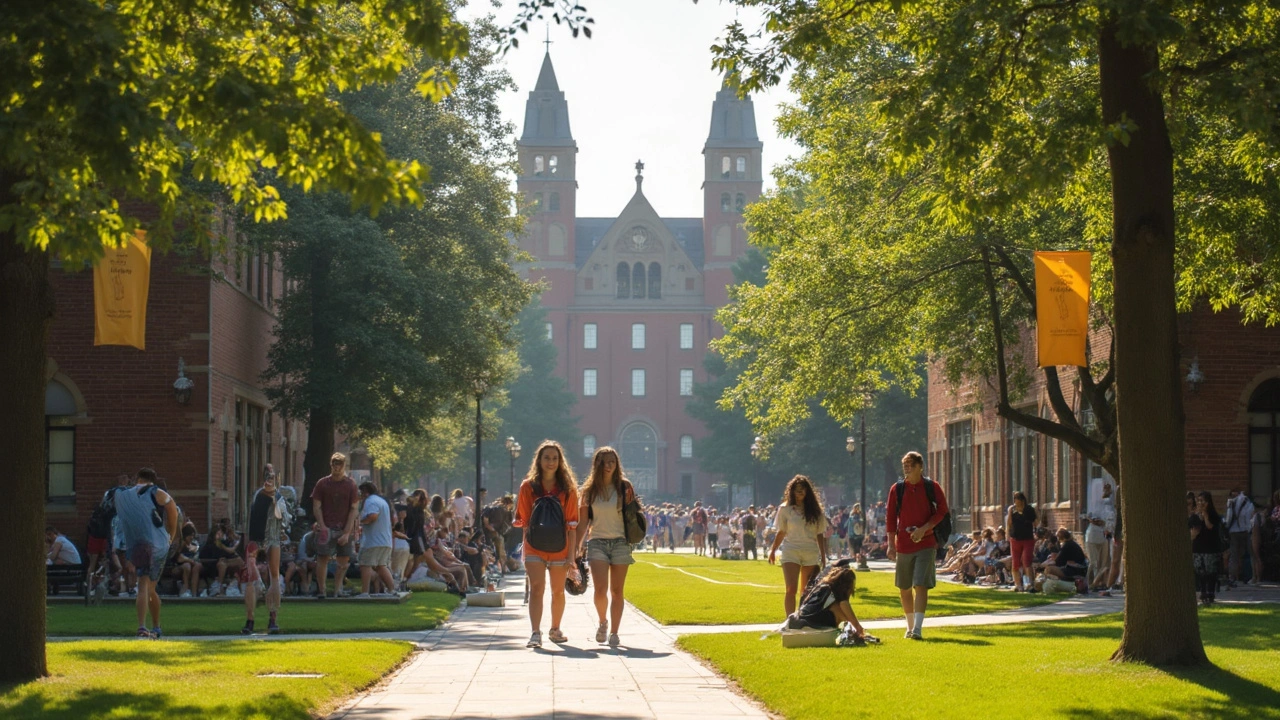If you think summer school in the US is just for kids who failed a class, you’re missing the whole picture. Sure, there’s a fix-your-grades side, but that’s just the start. These days, summer schools are more about extra chances—think science camps at top universities, creative writing workshops, or even sports clinics where you can actually meet a college coach.
Kids and teens end up at summer schools for all kinds of reasons. Some need to catch up, but others want to get ahead, build a killer college app, or just try something new. Some programs even count for real college credit. So, whether you’re aiming to score higher grades or just ditch boredom, there's probably a program that fits.
- What Exactly Is Summer School?
- Types of US Summer Schools
- Who Goes and Why?
- Tips for Getting the Most Out of Summer School
What Exactly Is Summer School?
At its core, summer school in the US is an educational program that runs during the break between spring and fall semesters—usually from June to early August. The big thing to know: it isn’t just for kids who need a second shot at passing a class. Summer schools now offer everything from advanced math to theater arts, coding bootcamps, and even SAT prep. Some districts run them at regular public schools, while others pop up at colleges or specialized learning centers.
You’ll find options for every age group—elementary, middle, high school, and even college students. Most programs last a few weeks, though some are as short as one week and others might last most of the summer. The schedule is usually more relaxed than the regular year (think mornings only or three days a week), so there’s still room for summer fun.
Not all summer school classes are created equal. Here’s a quick breakdown of the major flavors:
- Credit Recovery: For students who didn’t pass a required course and need to make it up without falling behind.
- Enrichment Programs: To help motivated students explore subjects not offered during the regular year.
- Accelerated Courses: For students looking to jump ahead in the curriculum, sometimes even earning high school or college credit early.
- Special Interests: These include arts, sports, STEM, language camps, or coding clinics, usually designed for skill-building and fun.
Almost 3 million students joined summer schools in 2023 in the US, and that number keeps climbing, especially after the pandemic changed the way folks think about "catching up" and flexibility in learning. Here’s a look at the most common program types:
| Type | Main Purpose | Typical Length |
|---|---|---|
| Credit Recovery | Make up failed classes | 4-6 weeks |
| Enrichment | Explore new topics, get ahead | 1-4 weeks |
| Special Interests | Arts, sports, or STEM focus | 1-3 weeks |
| College Prep | SAT/ACT, college credit | 2-6 weeks |
If you’re searching for summer schools, the choices are endless, but the key is figuring out what you actually want out of the experience. Are you trying to fix a grade, boost your college app, or just learn something cool you can’t get in a regular classroom? Your answer will decide which type of program is right for you.
Types of US Summer Schools
There’s a wild variety of summer schools in the US—way more than just the old-school makeup classes. Let’s break down the main types so you know what’s out there.
- Credit Recovery: If you failed a class or want to boost a low grade, this is where you go. These typically run at your local public high school. Expect smaller classes, a faster pace, and a chance to actually start the next school year on track.
- Acceleration: These programs let you jump ahead. Some students take Algebra I in the summer so they can open up their schedule for advanced classes later. Others knock out required courses to free up time for sports or electives.
- Enrichment/Camps: These are the fun ones—coding camps, theater intensives, even "Mad Scientist" week for younger kids. Top universities like MIT and Stanford run their own programs, and anyone can apply. Some are crazy competitive. The upside? You could leave with college credit, a cool portfolio, or a summer full of new experiences.
- ESL (English as a Second Language): For students whose first language isn’t English, these summer school options help with speaking, reading, and writing skills. Lots of international students head to these, especially in bigger cities.
As Dr. Karen Arnold from Boston College once said, "Summer learning isn’t just about catching up; it’s about opening doors students never even knew existed."
Here’s a quick look at how the most common types compare by purpose, length, and cost:
| Type | Main Purpose | Typical Length | Typical Cost |
|---|---|---|---|
| Credit Recovery | Make up failed courses | 4-6 weeks | $0–$500 |
| Acceleration | Get ahead in coursework | 4-8 weeks | $200–$1,000 |
| Enrichment | Special interests/skills | 1-8 weeks | $300–$7,000 |
| ESL | English language skills | 4-10 weeks | $500–$4,000 |
Some camps let students live on campus for the full summer (think mini-college life); others are day programs in your local community. So, whether you’re looking for a place to make up algebra or earn bragging rights at a robotics camp, there’s a summer school with your name on it.

Who Goes and Why?
Summer schools in the US pull in a mix of students, and it’s more diverse than people think. Of course, you have the classic group—students who didn’t quite pass a core class and need to make it up. Public high schools usually offer summer sessions for this, so kids aren’t stuck repeating a full year.
But the “catch-up” crew is only part of it. Plenty of students actually choose to attend summer school to get ahead. For example, ambitious high schoolers might knock out a health or government requirement early to free up their regular schedule for sports or fun electives. Some students jump in to take advanced classes (think AP Physics or even college calculus) that their school might not offer during the year.
Then you’ve got the enrichment crowd. Lots of competitive summer schools, especially those linked to big-name universities like Stanford or MIT, offer programs where students can dive into subjects they love—coding, robotics, journalism, even marine biology. These aren’t just for top grades; the biggest draw is hands-on experience and making friends who geek out over the same interests.
Kids in middle and even elementary school join too, especially if their parents are hoping for a head start on math or reading. Some camps focus on language skills, music, or the arts. There are also camps just for international students wanting a taste of American culture (think language immersion and campus life preview).
And don’t forget athletes. Tons of specialized programs help students level up for school teams or even hope to catch a college recruiter's eye. So, bottom line: summer school isn’t just for students in trouble. It’s packed with motivated teens, curious youngsters, and even families looking for something different from the usual summer routine.
Tips for Getting the Most Out of Summer School
Summer schools can be a game changer, but only if you know how to squeeze the most out of your time there. Here’s the lowdown on what actually works.
- Summer schools move fast. Classes are usually shorter, so you can’t coast and hope to catch up later. Set a daily routine—review notes every night and don’t wait to ask questions if you’re lost. Most teachers are used to kids needing help and will answer questions quickly.
- Mingle with people you don’t know. A lot of good programs bring students together from different towns, states, or even countries. Networking isn’t just some business thing; it starts at summer school and can pay off for years—especially if you swap socials and contacts at the end.
- Sign up for extra stuff. Whether it’s a guest speaker, a field trip, or a late-night coding jam, these extras are where you might pick up new interests or find inspiration. In fact, national data shows kids who do enrichment or bonus sessions are more likely to stick with challenging academic work later.
- Be honest about your reason for being there. If you’re catching up, zero in on tests and assignments. If you’re there for enrichment, pick projects or research topics that actually interest you—they’ll help with college and scholarships down the road.
- Don’t just disappear after the program’s over. Some summer schools connect students with alumni groups or future opportunities. Stay in the loop—lots of students get invited back as mentors or volunteers, and that scores points on college or job apps later.
If you’ve got an eye on scholarships, keep in mind that some summer schools actually offer awards to top students, and colleges do ask about summer learning in applications. So don’t slack—showing up is good, but getting noticed is better.
